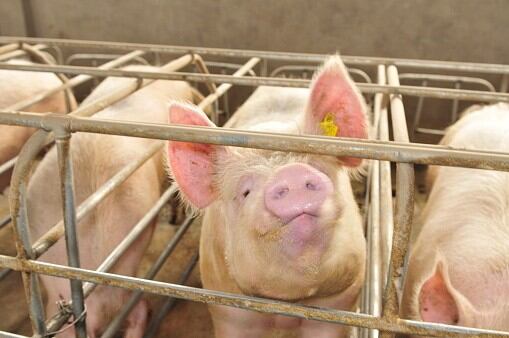Their trip follows a highly publicised trade mission led by Prime Minister Erna Solberg earlier this year, despite which salmon exports from the world’s biggest supplier have yet to take off.
On the surface, Beijing says Norwegian salmon does not meet exacting food safety standards brought in to prevent the introduction of lice and diseases to Chinese fish farms.
But many believe the decline in exports has been more politically motivated. Prior to 2010, when the Nobel Peace Prize was awarded to human rights activist Liu Xiaobo, almost all salmon available in China was provided by Norway. But by 2015 even the tiny Faroe Islands were exporting more salmon to China than their much bigger neighbour.
The prime minister’s delegation left Beijing hoping that a newly signed seafood agreement would lead to salmon sales worth US$1.45bn by 2025.
Yet little progress has been made in this regard. Consultant Harald Martin Misje recently told broadcaster NRK that salmon was still not coming into China in the volume Norwegian fish farmers had hoped—despite Norway complying with Chinese food safety bodies.
“I believe Norway has done everything we can to ensure our seafood is exported into China smoothly,” he said.
“As well as negotiating an agreement we have answered the many questionnaires they have sent us and we have given them all the assurances we can.”
Last week’s mission to Beijing, led by Astrid Holtan, deputy director of the Ministry of Trade and Industry, set out to answer any questions the Chinese authorities might have had, and calm any fears of health-related issues.
Before departing, Holtan struck a positive note, stressing that relations between the two countries had warmed significantly following the differences over the treatment of the late Chinese dissident by the Nobel committee in 2010.
More from China...
Record pork imports make way for substantial growth in China’s hog herd
China’s pig population will stand to grow for the first time in six years next year, resulting in further declines in pork imports from their recent record high numbers.

Equivalent to more than half of the world’s hog population, China’s pig heard has shrunk over the last five years to 420m from a peak of 475m, according to the US Department of Agriculture.
However, it now predicts the headcount will increase by more than 27m next year, saying China has entered a “new cycle” as it drives output to larger producers from a traditional base of tiny operators.
Historically high hog prices have led to rapid herd expansion by major players, leading to the departure of owner-operator farms.
"A steep run-up in prices that began in 2014," and saw values hit record highs last year encouraged large-scale producers, at least, "to invest in new facilities and equipment".
As small producers close, authorities hope more emphasis will be placed on food safety and environmental protection.
"While the largest producers still control a minority of hog supplies, growth in this part of the sector now appears to exceed the exit of small producers," the USDA said.
China’s hog industry has seen the “exit of mainly small, less-efficient producers who could not comply with new standards" on issues such as waste treatment.
This issue is approaching something of a head, with a deadline for hog farm closures in so-called "forbidden zones", on environmental grounds, the USDA said.
In terms of imports, the department predicts Chinese pork imports will have declined next year by as much as 27% since a record high was logged in 2016 of 2.2m tonnes.
"Imports are forecast to decline for the second consecutive year in 2018 as production gains reduce demand for imported pork," the USDA said.
"The European Union, US, and Canada will remain the principal suppliers, competing primarily on price," it added.
